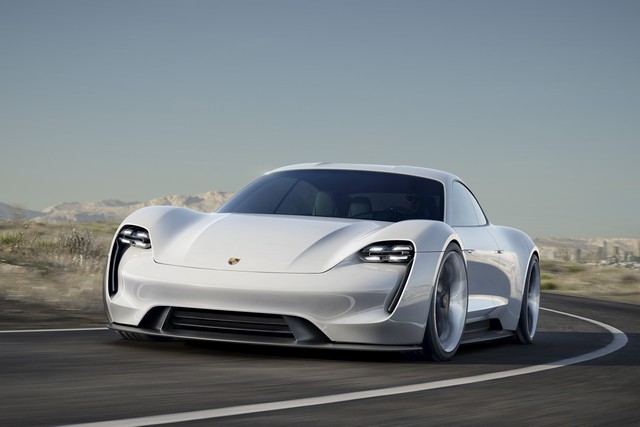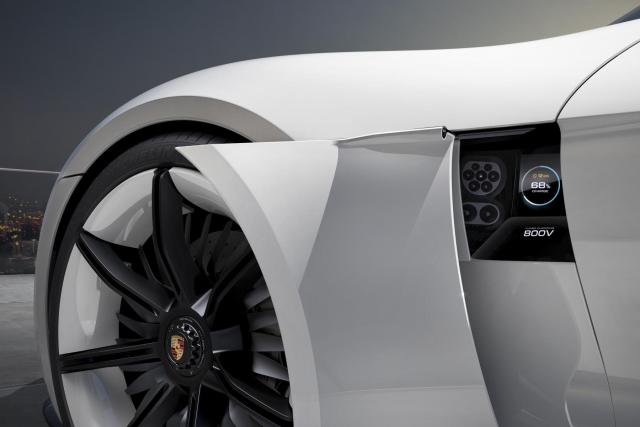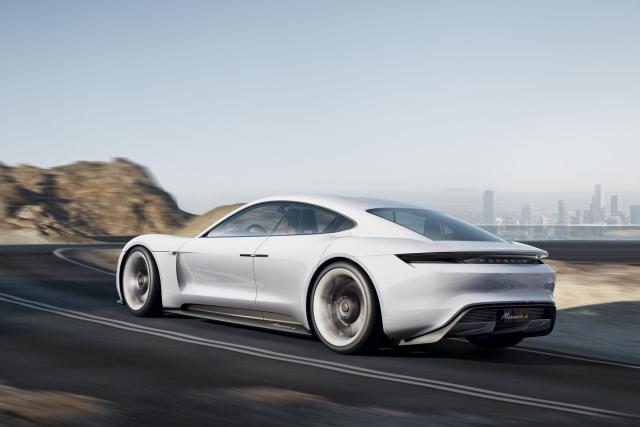SEPTEMBER 16, 2015
 Monday, September 14, 2015 at 08:59AM
Monday, September 14, 2015 at 08:59AM

Google, John Krafcik. Editor-In-Chief's Note: Kudos to Google for hiring John Krafcik to head its self-driving car program, which is refreshing in that they're acknowledging that they don't know everything - unlike you know who - and need an industry-savvy veteran to run things. A veteran of Ford, Hyundai and most recently TrueCar, Krafcik's visionary persona will fit right in out in Mountain View. -PMD

The Frankfurt Auto Show, Industry media types. FCA CEO Sergio Marchionne will miss the Frankfurt automobile show so he can focus on the company's negotiations with the UAW. The union named FCA as its "target" in this year's contract negotiations with the domestic auto industry, which will do wonders for Sergio's already super-inflated ego. After all, his goal in life is to shove his "vision" down the throat of the U.S. auto industry, and he'll get his chance through these negotiations. Sighs of relief could be heard all the way back in Detroit, however, as industry scribes were spared from covering the blowhard at one more auto show.
UPDATE 6:55 p.m. 9/15: The UAW and Fiat Chrysler Automobiles reached a tentative agreement tonight that the company's 39,000 unionized employees will ratify or reject. UAW President Dennis Williams and FCA US LLC CEO Sergio Marchionne will hold a 7:15 p.m. news conference in Detroit.
(Photo: Kimberly P. Mitchell, Detroit Free Press)
As Peter said on Twitter: "Sergio appears in his new UAW-approved shower cap."

(Images courtesy of Porsche)
This is the Porsche Mission E, the first all-electrically powered four-seat sports car in the brand's history. Porsche PR minions say that the concept car "combines the unmistakable emotional design of a Porsche with excellent performance and the forward-thinking practicality of the first 800-volt drive system." Key details? Four doors, four single seats, all-wheel drive, all-wheel steering, over 600HP (440 kW) and over 500 km driving range.

The drive system of the Mission E features two permanent magnet synchronous motors (PMSM) – similar to those used in this year's Le Mans-winning 919 hybrid prototype racer – to accelerate the sports car and recover braking energy. Together the two motors produce over 600HP and propel the Mission E to a speed of 100 km/h in less than 3.5 seconds and to 200 km/h in under twelve seconds. In addition to their high efficiency, power density and uniform power development, they offer another advantage: unlike today's electric drive systems, they can develop their full power even after multiple accelerations at short intervals.

The instrument cluster shows five round instruments – they can be recognized as Porsche, but they are displayed virtually in OLED technology, i.e. by organic light-emitting diodes. The round instruments are organized according to the driver-relevant themes of Connected Car, Performance, Drive, Energy and Sport Chrono. The controls are just as innovative. An eye-tracking system detects, via camera, which instrument the driver is viewing. The driver can then activate the menu of the instrument in focus by pushing a button on the steering wheel and navigate in it – which also involves an interplay of eye-tracking and manual activation. But that is not all: the display follows the seat position and body attitude of the driver in what is known as a parallax effect. If the driver sits lower, higher or leans to one side, the 3D display of the round instruments reacts and moves with the driver. This eliminates situations in which the steering wheel blocks the driver's view of certain key information, for instance. All relevant information such as vehicle speed is always within the driver's line of sight.

Porsche says that the Mission E can travel over 500 km on one battery charge, and it can be charged with enough energy for around 400 km more driving range in about fifteen minutes. The reason: Porsche is a front-runner in introducing innovative 800-volt technology for the first time. Doubling the voltage – compared to today's electric vehicles that operate at 400 volts – offers multiple advantages: shorter charging times and lower weight, because lighter, smaller gage copper cables are sufficient for energy transport. A moveable body segment on the front left wing in front of the driver's door gives access to the charging port for the innovative “Porsche Turbo Charging” system. Via the 800-volt port, the battery can be charged to approximately 80 per cent of its capacity in around 15 minutes – a record time for electric vehicles. As an alternative, the technology platform can be connected to a conventional 400-volt charging station, or it can be replenished at home in the garage via convenient inductive charging by simply parking over a coil embedded in the floor of the garage from which the energy is transferred without cables to a coil on the car's underbody.

The need-based all-wheel drive system with Porsche Torque Vectoring – which automatically distributes torque to the individual wheels – transfers the drive system's power to the road, and all-wheel steering gives precise, sporty steering in the desired direction. This makes the Mission E fit for the circuit race track; its lap time on the Nürburgring Nordschleife is under the eight-minute mark. Is this the Porsche sports car of tomorrow? Yes. Watch a video here.

(Chevrolet images)
Less weight plus more power equals more fun. It's the timeless formula when it comes to automobiles. With weight savings of up to 390 pounds (177 kg), the 2016 Camaro delivers some impressive performance numbers. The standard Camaro (shown in white) with the 2.0L 275HP Turbo 4-cylinder and six-speed manual gearbox goes 0-60 in 5.4-seconds and delivers a 14.0-second quarter-mile. With the available, 335HP, 3.6L V6 and eight-speed automatic, the Camaro gets to 60 mph in 5.1 seconds and does the quarter mile in 13.5 seconds. And in Chevrolet testing, the all-new 455HP V8-powered Camaro SS coupe (shown in black) sprints from 0-60 mph in 4.0 seconds and covers the quarter-mile in 12.3 seconds, when equipped with the all-new eight-speed paddle-shift automatic transmission. With standard 18-inch wheels and Goodyear Eagle Sport all-season tires, the 2.0L Turbo delivers 0.85 g in cornering grip and 60-0-mph braking in 129 feet. With the RS package, which includes 20-inch wheels and Goodyear Eagle F1 Asymmetric all-season run-flat tires, the 3.6L V-6 delivers 0.89 g in cornering and 60-0-mph braking in 124 feet. The Camaro SS features Eagle F1 Asymmetric 3 run-flat summer-only tires, enabling 0.97 g in cornering and 60-0 braking in 117 feet. The 2016 Camaro goes on sale this fall with a MSRP of $26,695 for the Camaro 1LT, and $37,295 for the 1SS.




(Images courtesy of Automobili Lamborghini)
Lamborghini has introduced the new Huracán LP 610-4 Spyder at the Frankfurt International Motor Show. The open top (utilizing a lightweight, electrohydraulic soft top) version of the Huracán LP 610-4 "combines the power and performance of the coupé with the emotion of open-air driving," according to Lamborghini PR minions. The new Huracán LP 610-4 Spyder is powered by a naturally-aspirated, 5.2-liter V10 producing 610HP/449 kW. It goes from 0 to 62 mph (100 km/h) in 3.4 seconds with a top speed of 201 mph/324 km/h. The Spyder also includes new technical features of the 2016 Huracán family including "cylinder on demand" in combination with "stop start" technology and a new, improved, electronically controlled all-wheel drive system.


(Mercedes-Benz)
This is the Mercedes-Benz "Concept IAA" (for Intelligent Aerodynamic Automobile). Mercedes says that it is two cars in one: an aerodynamic wizard with a Cd value of 0.19 and a four-door coupé embodying "irresistible" design (uh, that's overstating the case by a long shot and by the way, we can resist it just fine, thank you very much). The IAA concept switches automatically from design mode to aerodynamic mode when the vehicle reaches a speed of 80 km/h. At that point (or at the touch of a button), eight segments extend at the rear, increasing its length by up to 390 millimetres; front flaps in the front bumper extend by 25 mm to the front and 20 mm to the rear, improving the air flow around the front end and the front wheel arches; the Active Rims alter their cupping from 55 mm to zero; and the louver in the front bumper moves 60 mm to the rear, improving the underbody air flow. Inside, the "Concept IAA" continues the design line of the S-Class and S-Class Coupé while offering new, touch-based functions that provide an idea of what the interior of a business sedan might look like in the near future.





(Audi)
Audi presented the all-electric e-tron quattro concept at Frankfurt. The concept accurately predicts a production model arriving in early 2018. The Audi e‑tron quattro concept is powered by three electric motors: One drives the front axle while the two others act on the rear axle (with torque vectoring). Total power output is 320 kW. The driver can even temporarily muster 370 kW and over 800 Nm (590.0 lb-ft) of torque. Audi says that the e‑tron quattro concept goes 0 to 100 km/h (62.1 mph) in 4.6 seconds and reaches a top speed (electronically governed) of 210 km/h (130.5 mph). The large, 95 kWh lithium-ion battery integrated into the floor of the passenger compartment helps give the Audi e‑tron quattro concept a balanced axle load distribution, a low center of gravity and a range of more than 500 kilometers (310.7 mi). The Combined Charging System (CCS) enables charging with DC or AC electrical current. A full charge with DC electrical current at a charging column with an output of 150 kW takes just around 50 minutes. As an alternative, the study is equipped with Audi Wireless Charging technology for contact-less induction charging. The Audi e‑tron quattro concept uses a system for piloted parking that guides it to the proper position at the charging plate. In addition, a large solar roof provides electricity for the drive system battery on sunny days. Other stuff? The adaptive air suspension features controlled damping and lowers the body at higher speeds to reduce drag. The dynamic-all-wheel steering combines a dynamic steering system on the front axle with a steering system for the rear wheels. Depending on speed and the driving situation, they steer either opposite or in the same direction as the front wheels.

(Jaguar)
This is the Jaguar F-PACE because, well, you know.

 (Audi)
(Audi)
This is the new Audi S4. It's equipped with a new 3.0 TFSI V6 that has 354HP (260 kW) with 368.8 lb‑ft (500 Nm) of torque. It goes 0 to 62 mph (100 km/h) in 4.7 seconds, and has an electronically limited top speed of 155.3 mph (250 km/h). That is all.

(Toyota)
This is the Toyota C-HR concept, which Toyota PR minions are calling, "a stylish and compact hybrid crossover." It has been updated with the intention of launching a mass-market version in the not-so-distant future. The new five-door model is currently on display at the Frankfurt Auto Show. Why ask why, right?

(Nissan images)
This is the Nissan Gripz Concept, which Nissan PR minions are calling "a new breed of sporty compact crossover for a new, younger generation." Said to be inspired by classic desert rally cars and racing bicycles, the Gripz is packed with EV technology based on Nissan's Series hybrid system "Pure Drive" e-Power. Nissan calls the design language "emotional geometry." Interesting concept, although we shudder to think what will happen when they try to turn it into a production vehicle. That's usually when it all turns to shit for Nissan.




(Ford)
The long-awaited, all-new 2016 Ford Focus RS is the real deal. Powered by a specially-engineered version of Ford’s new 2.3-liter EcoBoost® engine, it will deliver a projected 350 horsepower and 350 lb.-ft. of torque and will go from 0-62 mph in 4.7 seconds, reaching a maximum speed of 165 mph. The Focus RS comes quipped with a super trick Ford Performance All-Wheel Drive system with Dynamic Torque Vectoring for "outstanding traction and grip with dynamic agility and cornering speed," according to the automaker. Focus RS drivers can select from four different drive modes that configure the all-wheel-drive system, damper controls, electronic stability control, steering and engine responses, and exhaust sound to deliver optimum performance in road or circuit driving conditions. Normal, sport or track settings are available, along with a special drift mode to help the driver achieve controlled oversteer drifts at the track. The pocket supercar will start at $36,605 when it becomes available next spring.




